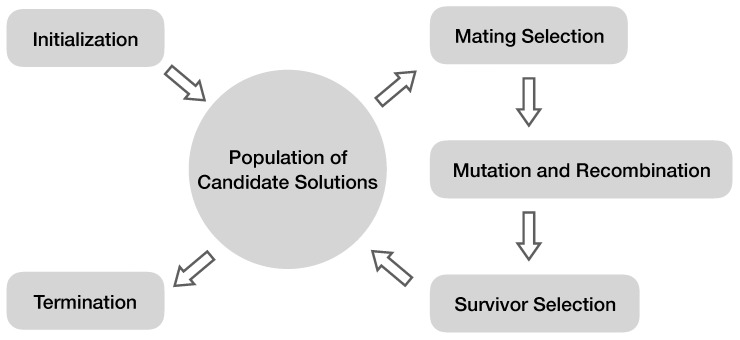Figure 2.
General workflow of an evolutionary algorithm. Typically, a population of candidate solutions to a problem is randomly initialized. Then, through the iterative evolution process, fitter solutions are more likely to be picked for reproduction and survival. Similar to living systems, random changes can be introduced to reproduction, such as mutation and recombination. The algorithm terminates once satisfactory solutions are observed or the computational limit (e.g., the maximal number of generations) has been reached.

